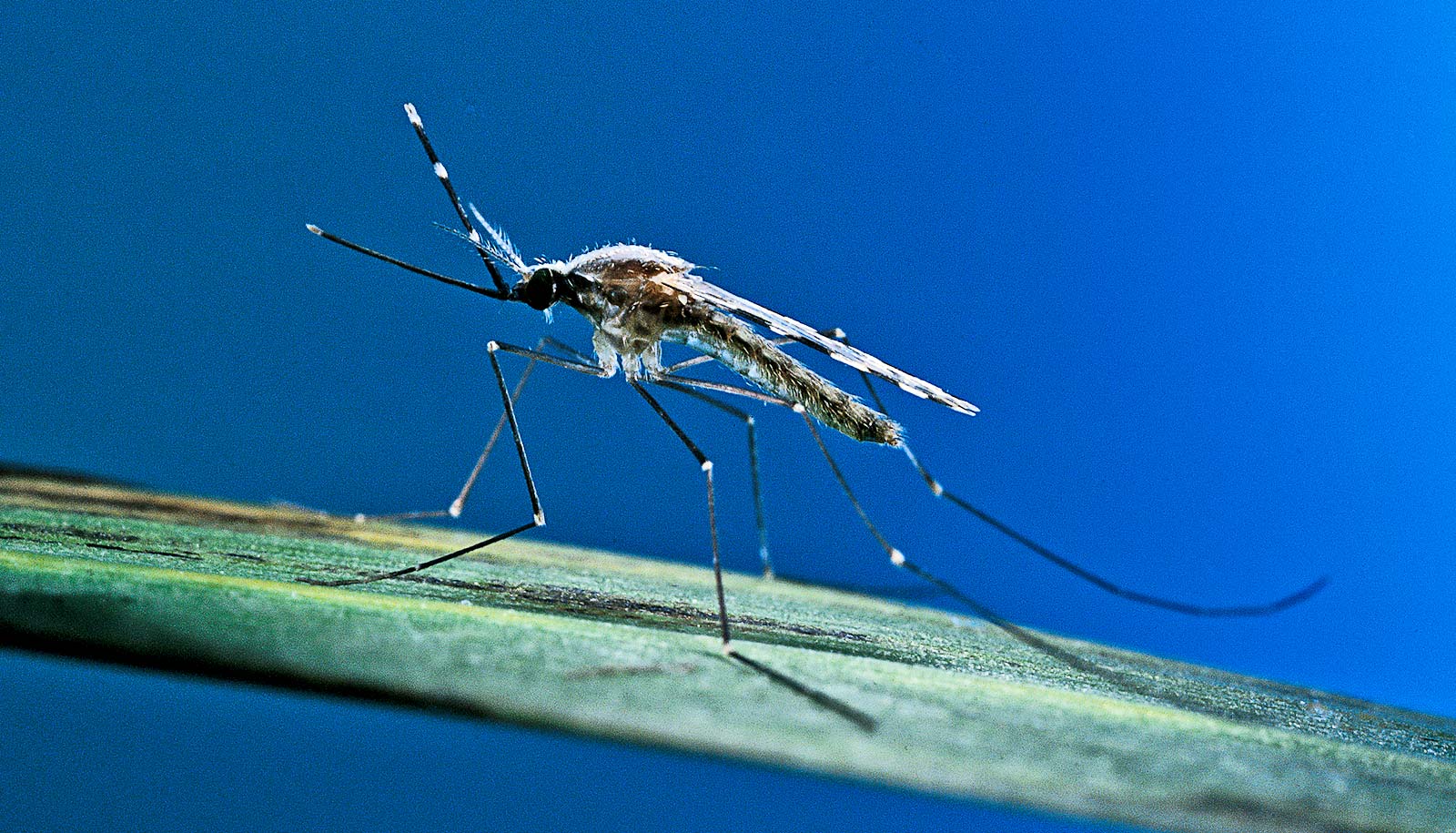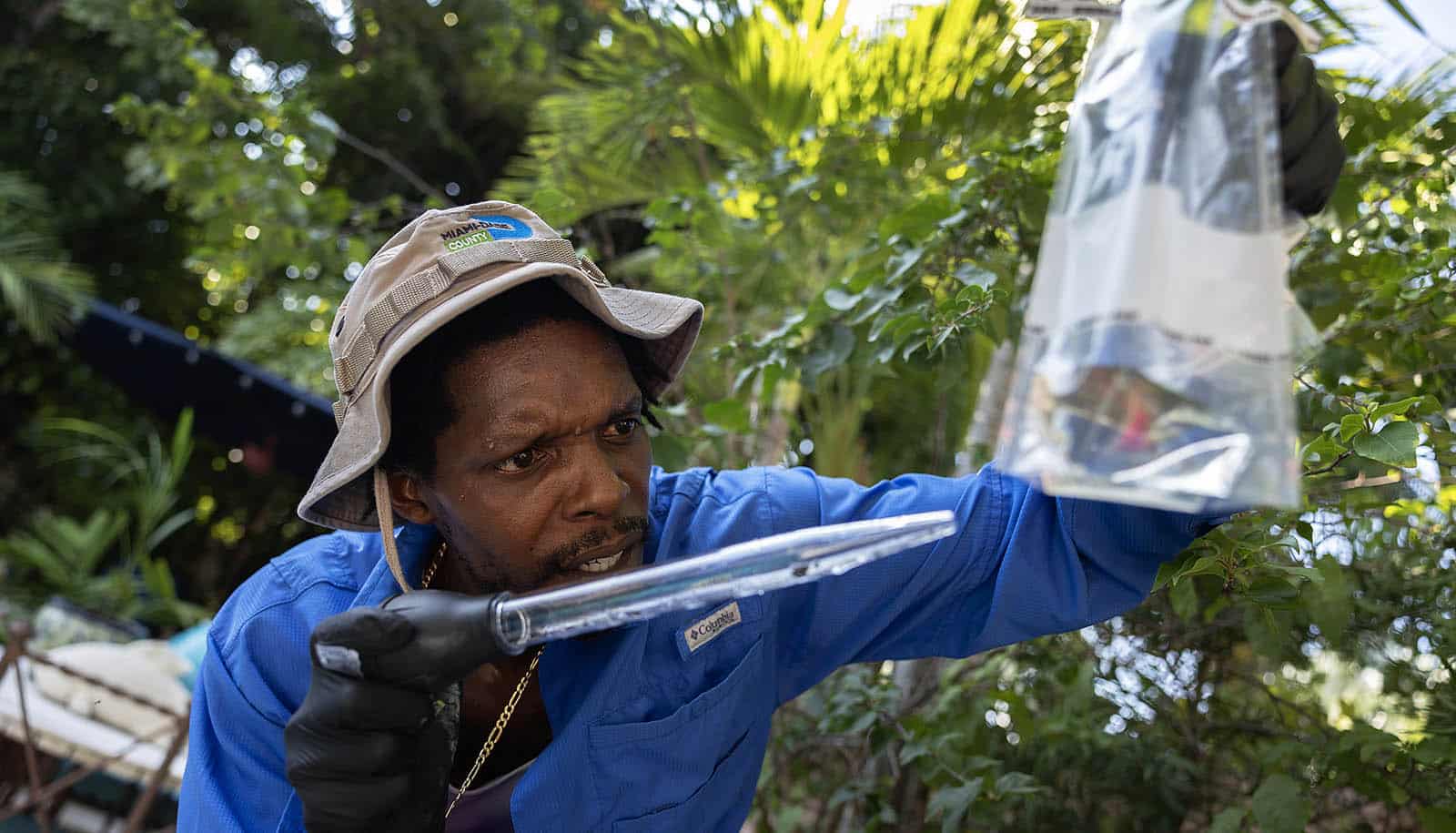
"The key to this breakthrough is that we were able to develop a screening method for the malaria parasite and block this process," says Michael Klemba. "While very much in its infancy, the results could open the door to a new way to fight malaria." (Credit: Getty Images )
Blocking nutrient could stop malaria parasite growth
New research could lead to a new way to fight malaria, one of the most devastating infectious diseases in the world.
A new study finds that preventing the malaria parasite from scavenging fatty acids, a type of required nutrient, it can no longer grow.
Living organisms often create what is needed for life from scratch. For humans, this process means the creation of most essential compounds needed to survive.
But not every living thing has this capability, such as the parasite that causes malaria, which affected an estimated 249 million people in 2022.
“The key to this breakthrough is that we were able to develop a screening method for the malaria parasite and block this process,” says Michael Klemba, associate professor of biochemistry at Virginia Tech and principal investigator on the project. “While very much in its infancy, the results could open the door to a new way to fight malaria.”
Malaria is caused while the parasite is replicating in human red blood cell and it relies on scavenging, rather than creating, to satisfy its need for fatty acids . Many fatty acids are obtained by metabolizing a class of host lipid, called lysophospholipids. However, scientists didn’t know how the parasite releases fatty acids from the host lipids.
The researchers did experiments with infected red blood cells and found chemicals that can stop the parasite from getting the needed fatty acids. They discovered that two enzymes were instrumental in breaking down host lipids to release the fatty acids the parasite needs. These enzymes work in different places: One works outside in the red blood cell, and the other works inside the parasite.
When scientists removed these two enzymes, they found that the parasite struggled to get the needed fatty acids and couldn’t grow well. This was especially true when that host lipid was the only fatty acid source available. When both enzymes were stopped from working, either by changing the parasite’s genes or by using drugs, the parasites couldn’t grow in human blood.
This shows that breaking down the host lipid, called lysophosphatidylcholine, to get fatty acids is critical for the malaria parasite’s survival in our bodies and that targeting these two enzymes could be a new way to fight malaria.
In 2017, a study came out that showed when lysophosphatidic acid levels drop in the host that the malaria parasite, known as Plasmodium falciparum , converts into a form that can be taken up by mosquitoes. P. falciparum causes malaria while replicating in host erythrocytes, or red blood cells, and relies on scavenging rather than synthesis, or the creation of compounds, to satisfy its need for fatty acids.
This seemed to be an important environmental cue, Klemba says, and that there was also evidence that host lipids were a preferred source of fatty acids.
“There wasn’t clarity on what the metabolic pathways were,” he says. “If we could show that these metabolic pathways were useful, then that would be an important contribution to the field.”
For Klemba, this was an important question to answer and one that his lab—and students—were in a unique position to do. Two graduate students worked on the project—Jiapeng Liu, now a postdoctoral scholar at Rutgers University, and Christie Dapper, a former professor at Virginia Tech. Liu was the lead author and Katherine Fike assisted with the project as a research specialist.
“There are two enzymes that are really important for this process: one is inside the parasite, and the other is exported into the host cell,” Klemba says. “Which is not typical of metabolic processes as they are typically carried out within the parasite. Why did the parasite find it useful to put one of these enzymes into the host? We have some ideas that that could be involved in host modification, which could be that the parasite remodels the red cell once it’s once it’s set up shop.”
The researchers found that only removing one of the two enzymes, which they named XL2 and XLH4, doesn’t do anything. Both have to be removed to inhibit parasitic growth.
The discovery has some limitations. The team conducted the research only using a culture dish, commonly referred to as in vitro. The researchers also are not sure if the compounds used to inhibit the two enzymes are toxic.
Some level of toxicity is expected, Klemba says, and it may be possible to engineer the toxicity out of the compounds. “But that could be a major challenge,” he says.
In the meantime, this discovery could open the door to therapeutic treatments for malaria.
The study appears in the Proceedings of the National Academy of Sciences . The National Institutes of Health, the US Department of Agriculture, and the biochemistry department at Virginia Tech funded the work.
Source: Virginia Tech
The post Blocking nutrient could stop malaria parasite growth appeared first on Futurity .
Share this article:
This article uses material from the Futurity article, and is licenced under a CC BY-SA 4.0 International License. Images, videos and audio are available under their respective licenses.
Related Articles:
Anti-psoriasis compound could lead to new drug for malaria
Sept. 19, 2019 • futurityMalaria may be returning to the United States
July 31, 2023 • futurityLinks/images:
- https://www.futurity.org/malaria-parasites-mutations-ethiopia-2972972/
- https://www.futurity.org/mosquito-bites-fatty-acids-skin-2817422/
- https://doi.org/10.1073/pnas.2320262121
- https://news.vt.edu/articles/2024/02/cals-research-mosquito-malaria.html
- https://www.futurity.org/malaria-parasite-mosquitoes-3180272/
- https://www.futurity.org


